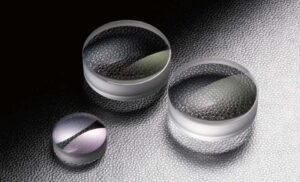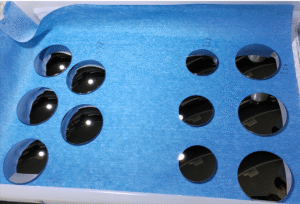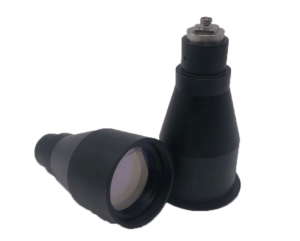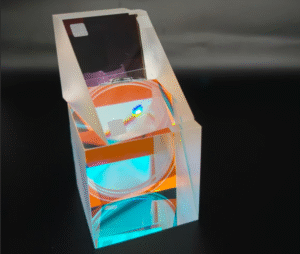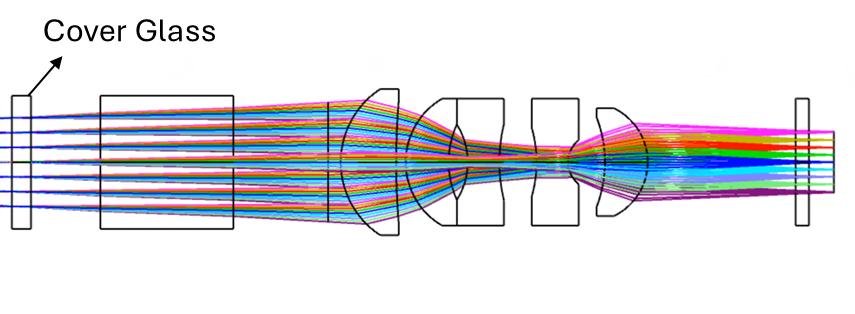What Is Ray Optics?
Ray optics (also known as geometrical optics) is a branch of physics that studies how light travels in straight lines and interacts with lenses and mirrors. It is based on the ray model of light, which simplifies light as straight rays to understand reflection, refraction, and image formation.

What Is a Ray Diagram in Physics?
A ray diagram is a graphical method used in ray optics to show the path of light rays as they reflect or refract through optical components like lenses and mirrors. Ray diagrams help visualize how an image is formed and whether it is real or virtual, upright or inverted, and magnified or reduced.
Optics Ray Diagram Rules
Here are the standard rules used in ray diagram construction for both lenses and mirrors:
| Ray Rule | Description |
|---|---|
| 1. Parallel Ray | A ray parallel to the principal axis refracts (or reflects) through the focus. |
| 2. Focal Ray | A ray passing through the focus emerges parallel to the principal axis. |
| 3. Optical Center Ray | A ray passing through the optical center continues undeviated (for thin lenses). |
| 4. Center of Curvature | (Mirrors) A ray passing through the center of curvature reflects back along its own path. |
Convex Lens Ray Diagram
A convex lens, or converging lens, bends light rays inward. Depending on the object’s distance from the lens, different images are formed:
| Object Position | Image Characteristics | Image Type |
|---|---|---|
| Beyond 2F | Smaller, inverted | Real |
| At 2F | Same size, inverted | Real |
| Between F and 2F | Larger, inverted | Real |
| At F | No image (rays parallel) | — |
| Between F and lens | Larger, upright | Virtual |
📷 [Insert Diagram Suggestion]: Convex lens ray diagrams showing object at different positions.
Concave Lens Ray Diagram
A concave lens, or diverging lens, always forms a virtual, upright, and reduced image regardless of object distance.
| Object Position | Image Characteristics | Image Type |
|---|---|---|
| Any Position | Smaller, upright, virtual | Virtual |
📷 [Insert Diagram Suggestion]: Concave lens ray diagram with labeled principal axis, focus, and rays.
Lens Ray Diagrams Summary Table
| Lens Type | Ray Behavior | Image Type | Image Properties |
|---|---|---|---|
| Convex Lens | Converging | Real or Virtual | Real → inverted, Virtual → upright |
| Concave Lens | Diverging | Always Virtual | Upright, reduced |
Convex Mirror Ray Diagram
Convex mirrors always reflect rays diverging outward, so they only produce virtual, upright, and smaller images, no matter the position of the object.
📷 [Insert Diagram Suggestion]: Convex mirror ray diagram illustrating focal point and image location.
Comparing Lenses and Mirrors in Ray Diagrams
| Feature | Convex Lens | Concave Lens | Convex Mirror |
|---|---|---|---|
| Image Type (Real/Virtual) | Both possible | Always virtual | Always virtual |
| Image Orientation | Inverted/Upright | Upright | Upright |
| Light Behavior | Converging | Diverging | Diverging |
Ray Optics in Real-Life Applications
At Bote Optics, we supply custom lenses and optical components for industries that rely on ray optics principles:
🔹 Precision Lenses: Convex and concave lenses for imaging, laser, and IR systems
🔹 Mirror Assemblies: Curved mirrors for beam control
🔹 Optical Design Support: For systems requiring specific image formation needs
Our manufacturing includes materials like Germanium, Silicon, Sapphire, and Calcium Fluoride with anti-reflective or DLC coatings.
Explore our Infrared Optics page for custom lens solutions.
Q&A: Common Questions on Ray Diagrams
❓ What is ray optics in physics?
Ray optics is the study of how light travels in straight lines and interacts with lenses and mirrors using ray diagrams.
❓ What is the purpose of a ray diagram?
Ray diagrams help predict image position, size, type, and orientation for a given optical setup.
❓ How does a convex lens form an image?
A convex lens focuses light rays. Depending on the object’s distance, it can form real or virtual images.
❓ How does a concave lens form an image?
A concave lens always forms a virtual, smaller, upright image on the same side of the lens.
❓ Are ray diagrams used in real optical systems?
Yes! Engineers and physicists use ray diagrams to design and align lenses in cameras, microscopes, telescopes, and lasers.
Conclusion
Ray optics and ray diagrams are key tools for understanding how light behaves through lenses and mirrors. Whether it’s a convex lens ray diagram, concave lens ray diagram, or mirror reflections, mastering these basics helps in both education and real-world applications.
At Bote, we support ray optics with precision lenses designed for your specific system. Contact us for custom lens manufacturing or system integration support.

